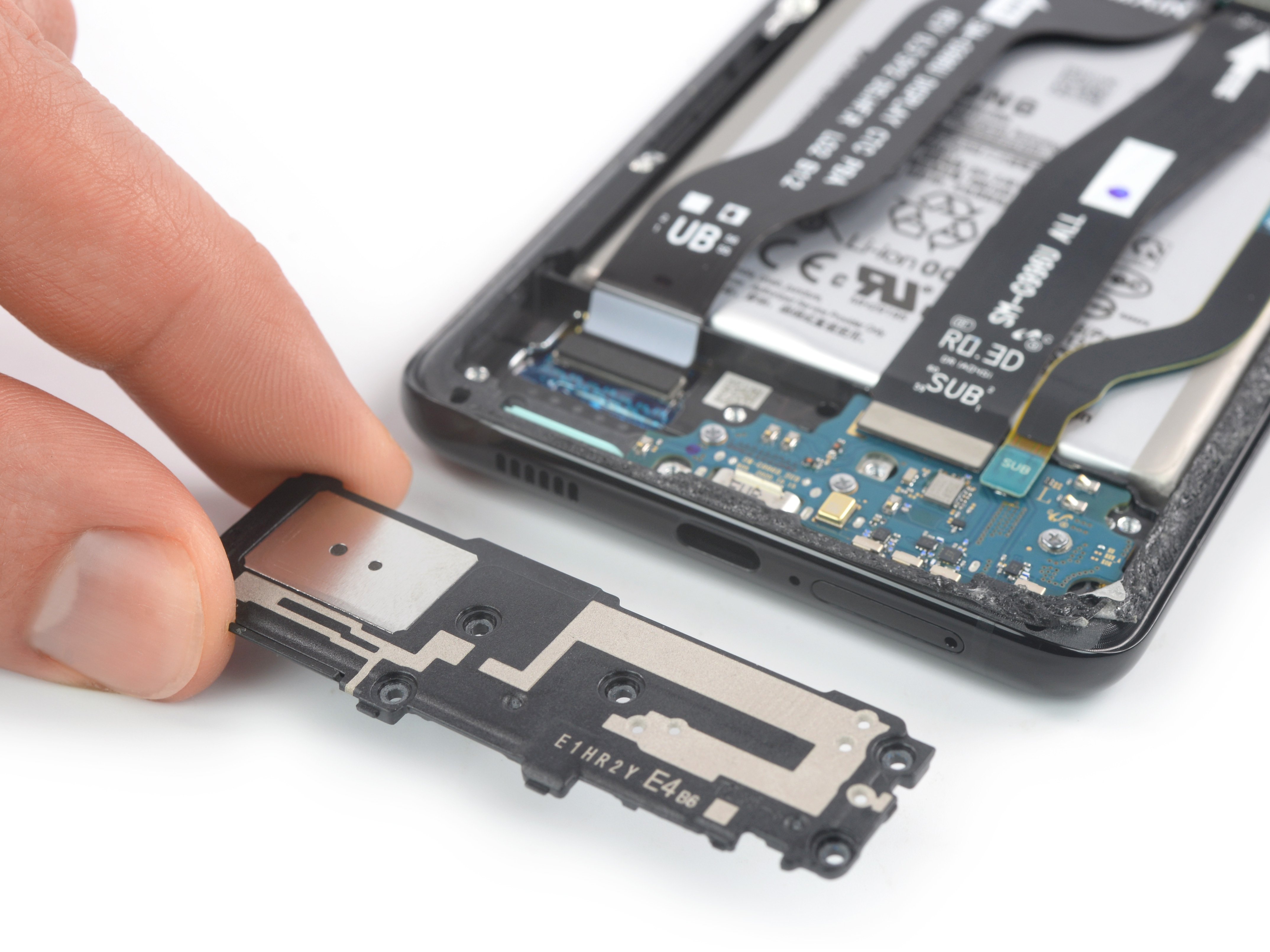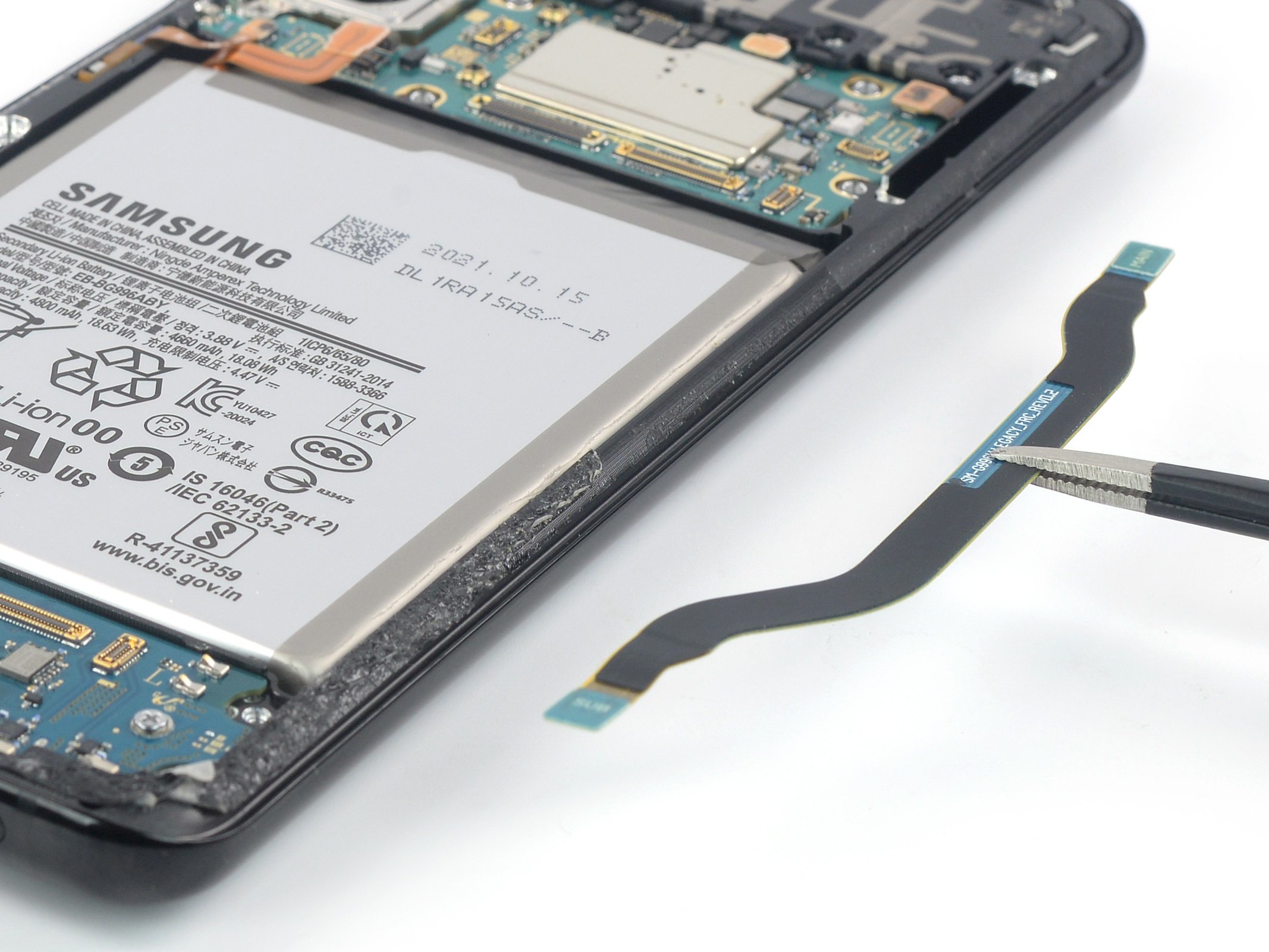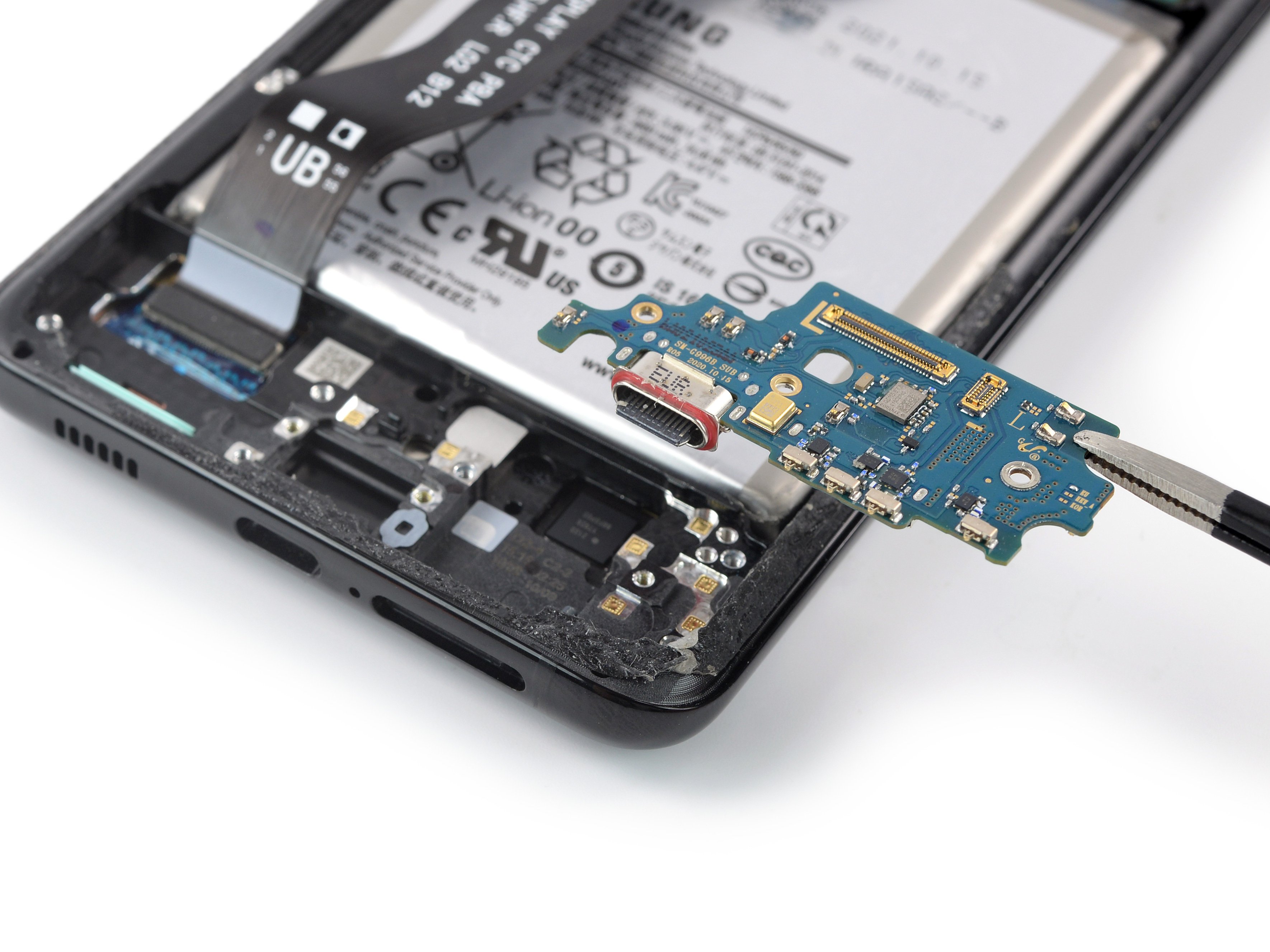Apple Watch Series 2/3 Screen Reconditioning
Duration: 45 minutes
Steps: 18 Steps
Apple Watch Series 2/3 screen coming up! Handle with care—these screens are delicate and don’t love rough treatment.
Ready to give your Apple Watch Series 2 or 3 a fresh new screen? This guide walks you through the repair with clear steps and a friendly vibe. Before you kick things off, make sure your Apple Watch is updated to prevent any unexpected pairing hiccups later. Heads up: Refurbishing the screen might temporarily mess with Apple Pay. The smart move is to remove your Apple Pay info before you start, and then add it back once you’re done. These steps show the process on the standard (GPS) version of the watch. Let’s get your device looking sharp again!
Step 1
If the screen's all cracked up, checking for spots or lines before starting isn't going to happen. You might want to fix that first—if you need help, you can always schedule a repair.
Before you get started, make sure you've got the right device - check the model number in the fitting region of the wristband. For example, it might say A1889.
While you're at it, take a peek at the serial number of your watch, also located in the fitting region. Easy peasy!
- Place the device on a clean white surface to look for any spots, lines, or other visual issues—think of it as giving it a test drive for clarity.
- Don't forget to jot down the device's serial number before moving forward; it's needed to generate a Technical Report. If you need a hand with that, you can always schedule a repair.
Step 2
Cracked touchscreen? No worries—just use the side buttons to power it down.
- Kick things off by unplugging your device and switching it off. Then, press and hold both side buttons together. When the Apple logo pops up, let go of the circular button but keep holding the other. Once the logo disappears again, you can release that button too—your device will be powered down and ready for the next step. If you need help along the way, you can always schedule a repair.
Step 3
Sometimes a bit of heat is your best friend when taking off the screen—feel free to warm things up before and during removal.
- Let's get this screen loose! Place the Apple Watch screen on the heating plate at 100°C for 1 minute. This will soften the glue that's holding it in place, making it easier to remove the screen from the frame.
Step 4
Keep those fingers safe and sound with some trusty rubber gloves!
Remember, a gentle touch is key! Too much pressure might make that blade dance and lead to unexpected nicks or damage to your smartwatch's insides.
Goggles on, my friend! Those pesky glass shards can pop up and surprise your eyes during the opening process.
Since the gap between the screen and the watch body is super slim, you'll want to grab a sharp blade to help you out with the separation.
Don't forget to take off the bracelet before diving into the whole process!
Step 5
Grab your trusty spudger and start from the top of the device. Gently glide it along the edge down to the bottom.
Keep an eye on the top edge of the device (that's where the touch flex cable hangs out) and don't forget about the lower part of the display (where the display flex is chilling).
Grab your trusty metal or plastic blade and give it a little saw action to slice through that glue, taking it nice and slow as you work your way around the screen frame.
If your screen is looking like a mosaic of cracks, reach for some isopropyl alcohol to help 'melt' that glue away and gently coax those glass shards out.
- Start by drizzling some alcohol around the screen's edge. Then, gently slide the blade into that sneaky little gap between the screen and the frame.
- Press down firmly and angle the blade towards the screen as you lift it away. You're doing great!
- Just a friendly reminder: keep the spudger blade within 2mm of the device. Going deeper could mess with the 'Force Touch' feature, and we don't want that!
Step 6
When putting things back together, make sure those tabs are flipped up before sliding the cables in—otherwise, your watch might not appreciate the rough treatment!
These tapes are available separately if you need replacements. To peel them off, a pair of 'rat-tooth' tweezers does the trick nicely.
Zero insertion force (ZIF) connectors can trip up even the most ambitious DIYers. They’re commonly used for attaching delicate FFC (flat flex cable) or FPC (flexible printed circuit) cables, so take your time and go easy—they’re a little finicky!
- Grab some isopropyl alcohol and gently lift away the tape that’s hanging on to those flex cables and connectors.
- With your trusty plastic lever, pop open the first of three ZIF connectors by lifting the tiny tab on the side opposite the cable.
- Flip up the locking tabs on the other two ZIF connectors. Almost there!
- Now, using tweezers, carefully separate the flex cables from the screen—just a gentle pull will do it. Screen’s off!
Step 7
Don't forget to rock those rubber gloves and safety glasses during this process!
Take it easy with the pliers—let's avoid any slips that might snag that display flex!
- Gently warm up the Apple Watch screen by placing it on a hot plate at 100°C for about 2 minutes—think of it as giving the glass a warm hug to loosen up.
- Grab the middle of the display with steady hands, then use a pair of pliers or nail nippers to carefully trim the curved edges—start on the sides, then move to the top and bottom. Keep it cool, calm, and precise!
Step 8
If you need to tackle the grounding, remember that it can be snagged separately! Grab your trusty 'mouse tooth' tweezers and gently work to remove the grounding completely. You've got this!
- Once you've popped off the edges, lay down some adhesive tape on the screen and let it chill in the separator at 100°C.
- Grab your tweezers or a slim metal spudger, splash on a bit of isopropyl alcohol, and gently lift off the grounding.
- With a metal spudger and a little isopropyl alcohol, carefully pry up the touch flex (that’s the one in the middle).
Step 9
Watch out for broken or damaged screens – those glass shards can be sneaky and might scratch or damage the polarizing film or even the OLED display. Handle with care!
- Fire up the separator vacuum so the screen stays put—no runaway screens here.
- Gently slide a 0.4mm molybdenum, steel, or gold wire between the touchscreen and the OLED panel of your Apple Watch.
- Keep your hand steady and saw back and forth at the same level as the glass—pretend you’re slicing through a tough sandwich, not hacking at a log.
Step 10
Set the grinding machine to its lowest speed. Keeping things slow helps avoid any shaky, wobbly surprises on your display.
- Start by checking the display for any glass shards. If you spot any sharp bits hanging around, grab some isopropyl alcohol and use the OCA protective film to safely clear them away.
- Once you’ve finished the glass cleanup, place the display on a sturdy surface and use a grinding machine to remove any leftover glue.
Step 11
Make sure to grab the right OCA for your Apple Watch (whether it's the 38, 40, 42, or 44mm model).
Don't forget to wear a mask and work in a clean environment with minimal particles—think of it as your very own clean room!
- Grab some isopropyl alcohol and wipe away any leftover OCA glue, along with any grime or grease that's hanging around.
- When you're ready to reapply the OCA glue, smooth it out in the same direction as the display flex cable for best results.
Step 12
Make sure to rock a mask and work in a space with as few particles as possible (think Clean Room vibes!).
- First things first, peel off that OCA protection and gently place the display into the application cast. You're doing great!
- Next up, let's get that touch glass applied on the cast. Nice and steady!
- Now, with one hand holding the cast, use your other hand to position your index finger below the screen and your thumb on top. Once you're all set, just close it up and lift the screen away from the cast. You've got this!
Step 13
When it comes to Apple Watch screens, keep it cool—no more than five screens laminated at a time. This helps prevent overheating and keeps the process smooth. If you need a hand, you can always schedule a repair.
- Lay the screen gently on the lamination rubber and close the lamination top to seal the deal!
- Now, let's get to laminating! Set it for 2 minutes at 40°C and let the magic happen.
Step 14
Notice some bubbles hanging out along the edge? Pop your screen back in the autoclave for another round.
If bubbles are chilling in the middle, give the screen a little heat with the separator and use some clips to help nudge those bubbles away.
Still seeing bubbles? Try again—remove the touch layer with a fresh OCA film and a generous splash of isopropyl alcohol.
- Place the screen in the autoclave at 50°C for up to 10 minutes.
Step 15
- Grab your trusty metal tweezers and a splash of isopropyl alcohol to carefully pluck out those pesky glass shards lurking around the edges.
- Dip a cotton swab in isopropyl alcohol and gently swipe along the edges to clear away the stubborn glue film hugging the force touch area.
Step 16
- Grab your trusty tweezers and gently peel away the blue protective film from the replacement adhesive—slow and steady wins this race.
- Line up the adhesive with the frame, making sure everything’s looking sharp.
- Set the new adhesive right on top of the force touch, then use the pointy end of your plastic tool to nudge and press it perfectly into place.
Step 17
Handle those flex wires gently—no yanking or forcing, or you might damage the drawers. And remember to connect everything with the drawers lifted up for a smooth fit. Stay patient, and if you need a hand, you can always schedule a repair.
- Gently position those flex wires onto the ZIF connectors, and with the help of your trusty 'mouse tooth' tweezers, guide them into place. It's like a little dance for your wires!
- Once they're snugly connected, swing those drawers closed.
- Now, let's bring your device to life! Power it on and run some tests to see how it’s doing.
Step 18
- Peel off that protective film from the adhesive covering the force touch like a pro.
- Gently place the screen onto the adhesive around the edges and give it a good press.
- Pop the device into the autoclave for a cozy 2-minute spa treatment.
- Finally, power it up and give the screen a sparkling clean with some lens cleaner.















